An ATV Operating Permit (sticker) is required for your machine if you are operating it on lands open to ATV use. The price is $10 and is valid for two years.
Each permit represents the number of ATVs in Oregon and the appropriate fuel taxes are placed in the ATV Grant Fund. About $75 of fuel taxes are applied to every Permit purchased in Oregon.
These funds are put back on the ground to keep your riding areas open and in good condition.
There are two ways to purchase a Permit:
Go to our State Park online store to purchase. You will be emailed a receipt, to print or save on your phone, to show in the field, until your sticker arrives in the mail. It is good for 21 days.
There are approximately 95 private ATV operating permit agents located throughout the state and several State Parks Offices to purchase the permit you can place on your machine.
Oregon accepts permits from other states which accept our permits, including California and Nevada. Other states such as Washington, Idaho, Utah and Arizona do not accept Oregon permits, therefore we cannot accept theirs. For a complete list, see the "Oregon Riders getting out-of-state permits" link below. Out of state residents can purchase an Oregon permit for $10 which is valid for two years.
These funds help provide statewide funding for off-highway vehicle (OHV) recreation projects such as operation and maintenance, law enforcement, emergency medical services, land acquisition, planning, and development in Oregon's OHV recreation areas.
The ATV Operating Permit, also known at ATV Sticker or Decal, is required when operating a Class I, II, III or IV ATV on lands open to the public for ATV use.
If a vehicle, such as a motorcycle or truck has a license plate, they need the permit on trails or sand dunes. If you are operating a street legal vehicle such as a truck on forest gravel roads which are open to passenger vehicles, then you do not need a permit. These gravel roads may be open to ATV use, and then you would need to have ATV sticker if you do not have a license plate.
If you are operating a street legal vehicle such as a truck on forest gravel roads which are open to passenger vehicles, then you do not need a permit. These gravel roads may be open to ATV use, and then you would need to have ATV sticker if you do not have a license plate.
You can purchase ATV Permits one of 2 ways:
1) Online at https://store.oregonstateparks.org/index.cfm?do=v.dsp_item&itemId=100
2) At any one of the many permit agents located throughout the state in stores and ATV dealerships
The price for a Class I, II, III, or IV permit is $10.00.
All permits, Class I, II, III, and IV are valid for 2 years from the month of issue. The permit expires on the last day of the month punched on the permit. Therefore if a permit is purchased at the beginning of the month, it will be valid for 2 years plus the remainder of the days of that month.
For side-by-sides, jeeps, trucks and passenger vehicle, the permit must be visible from the rear of the vehicle. Suggested placement areas are bumper, tailgate or rear window. For quads, place the permit on the right hand side of vehicle in visible location for sand rail vehicles the permit is to be displayed on the backside of the roll bar in the middle. For motorcycles, display permit in a location that is visible when the rider is on the vehicle.
Suggested placement areas are bumper, tailgate or rear window. For quads, place the permit on the right hand side of vehicle in visible location for sand rail vehicles the permit is to be displayed on the backside of the roll bar in the middle. For motorcycles, display permit in a location that is visible when the rider is on the vehicle.
Permits that are lost or damaged, such as broken windows, switching out body parts, or peeled off by removing front forks will be replaced for the full fee and a new permit must be issued.
Out of state permits:
An ATV/OHV operating permit that is issued in another state shall be honored in the State of Oregon if the issuing state also honors an Oregon ATV operating permit. This arrangement is Reciprocity. Unfortunately more states do not accept the State of Oregon Permit, therefore residents of those states must purchase an Oregon ATV Permit.
There is not a different permit for out of state residents. You would just purchase the regular Oregon ATV Permit and that would be valid for 2 years.
For a list of states that have reciprocity with Oregon visit the Out-of-State Riders section below.
A person who operates an off road vehicle in a designated off road area or trail without a permit is subject to a Class C traffic violation. Which is base fine of $160.
Oregon has a program of reciprocity for ATV Permits, which is dependent on other states having reciprocity with Oregon. If another state accepts our Permit, then we accept their Permit. There are three scenerios: 1) states that we have reciprocity with, 2) states that we do not have reciprocity with and 3) states that have no permit program.
ATV Permit Reciprocity
There are 19 states we have reciprocity with. If someone has a current Permit from one of these States, it is accepted in Oregon and Oregon’s ATV Permit is accepted in their state.
Arkansas
California
Connecticut
Delaware
Florida
Indiana
Louisiana
Michigan
Minnesota
Missouri
New Mexico
Nevada
New York
Oklahoma
Ohio
Pennsylvania
Rhode Island
Tennessee
Vermont
No Reciprocity
There are states that specifically do not accept our permits, therefore we cannot accept theirs.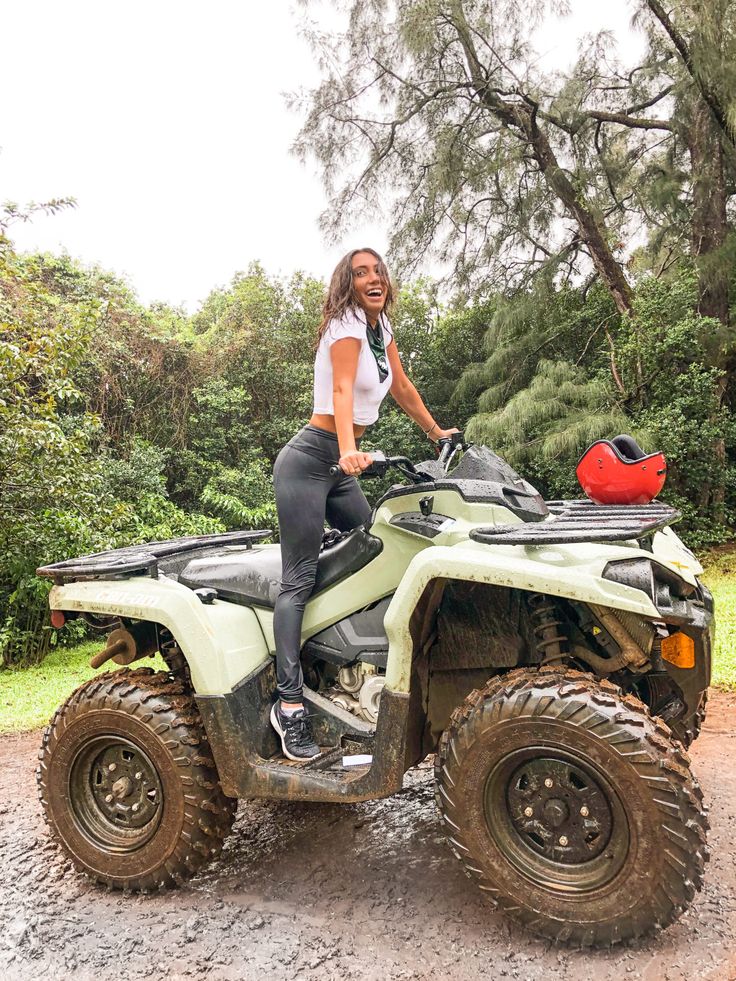 Out-of-state riders can purchase a permit on our on-line Park store, which would instantly give them a .pdf file in their email which they can use as proof for permit for 30 days. The actual permit will be mailed to you within 21 days. They cost $10 and are valid for 2 years.
Out-of-state riders can purchase a permit on our on-line Park store, which would instantly give them a .pdf file in their email which they can use as proof for permit for 30 days. The actual permit will be mailed to you within 21 days. They cost $10 and are valid for 2 years.
Arizona
Colorado
Idaho
Iowa
Maine
Maryland
Massachusetts
Montana
New Hampshire
New Jersey
North Dakota
Texas
Utah
Washington
Wisconsin
Wyoming
No Permit
There are 14 other states that have no permit program at all, therefore they need to purchase the Oregon permit. Out-of-state riders can purchase a permit on the on-line Park store, which would instantly give them a .pdf file in their email which they can use as proof for permit for 30 days. The actual permit will be mailed to you within 21 days. They cost $10 and are valid for 2 years.
Alabama
Alaska
Georgia
Hawaii
Illinois
Kansas
Kentucky
Mississippi
Nebraska
North Carolina
South Carolina
South Dakota
Virginia
West Virginia
Some states issue License Plates for ATVs, which allows them to operate on paved roads in their states. Those vehicles are NOT street legal in Oregon.
The states that do not have reciprocity with Oregon, require Oregon residents to get an out of state permit. If you are a Oregon Resident and wish to ride in one of the following states, you will need to get a permit for that state. Most of them can be ordered online. Click on the state for directions to obtain a permit.
Arizona $25 - 1 year
Colorado $25.25 expires March 31st
Idaho $12 expires December 31st
Iowa $17.75 expires December 31st
Maine $76, 7 days
Maryland $10
Massachusetts $33 - 1 year
Montana $35 expires December 31st
New Hampshire $40, 10 days
New Jersey $38
North Dakota $10, expires December 31st
Texas $16 expires August 31st
Utah $30 + $5 online order- 1 year
Wisconsin $20, 5 day
Wyoming $15 - 1 year
Washington – Effective October 1, 2021, Washington requires Oregon Residents to get a Washington Permit (https://apps.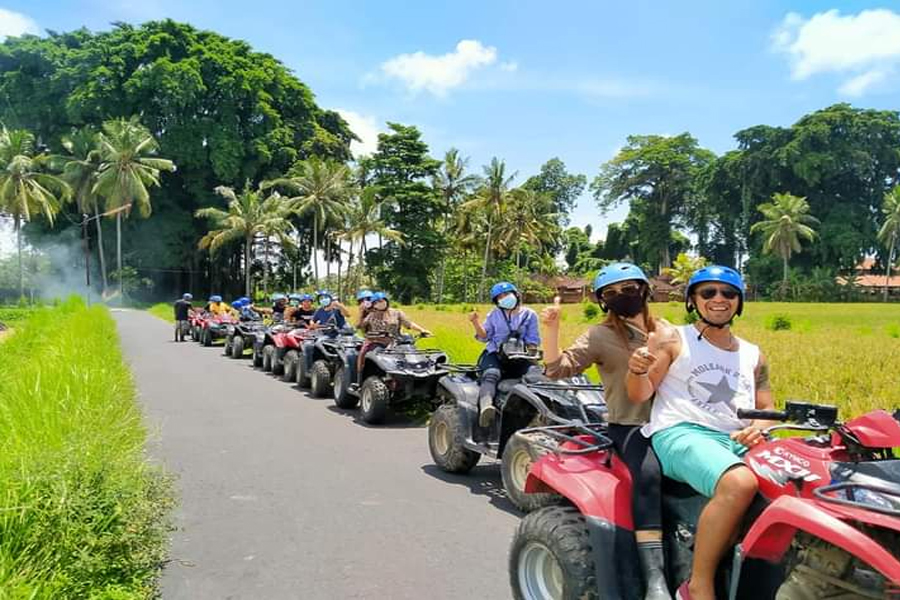 leg.wa.gov/rcw/default.aspx?cite=46.09.420). They are free, but riders must go to a Washington Vehicle Licensing Office, with receipt of your Oregon ATV Permit and Driver License, to be issued a Washington Permit. To find an office and check hours go to https://fortress.wa.gov/dol/dolprod/dsdoffices/.
leg.wa.gov/rcw/default.aspx?cite=46.09.420). They are free, but riders must go to a Washington Vehicle Licensing Office, with receipt of your Oregon ATV Permit and Driver License, to be issued a Washington Permit. To find an office and check hours go to https://fortress.wa.gov/dol/dolprod/dsdoffices/.
The other states either accept Oregon’s ATV Permit or do not have a permit requirement.
Ocean Shore ATV Operating Permits are issued by OPRD. A person with a disability can establish they are entitled to a reasonable accommodation by providing OPRD a copy of physician’s letter; DMV disabled placard; Veterans letter; or Oregon State Parks Special Access Pass.
Once established, they can qualify for a permit to operate a quad (Class I ATV) or side-by-side (Class IV ATV) on certain ocean shore areas. However, upon request from an individual with a disability, OPRD may issue such a permit for sections closed to motorized use using criteria established under OAR 736-004-0062.
For more information, please contact (503) 881-4637
There are approximately 95 private ATV Operating Permit Agents located throughout the state.
To become an ATV Operating Permit Agent, visit Doing Business with OPRD for details.
May 12, 2020 Note: We are not accepting applications for ATV Operating Permit Agents at this time. We'll update this information when we resume accepting applications.
Oregon requires safety education for people operating ATVs on public land. A free online ATV safety education course is available online at www.rideATVOregon.org
The online course is designed to teach you about Oregon Laws, Safety riding practices and environmental awareness. You can print a 30-day temporary card and a permanent one will be mailed to you.
Out-of-state residents, who do not have a similar card in their state, need to get the Oregon ATV Safety Education Card.
Youth under the age of 16 need to complete a hands-on course in addition to the online course within 6 months.
Class I (quad, 3-wheelers) – ATV Safety Education Card required for all ages.
Class II (sand rail, trucks, SUVs) – Valid state-issued Driver’s License or Instruction Driver Permit required.
Class III (off-road motorcycle) – ATV Safety Education Card required for all ages.
Class IV (side by side) – Valid state-issued Driver’s License or Instruction Driver Permit. If under 16, an ATV Safety Education Card required unless they have Instruction Driver Permit.
If you are renting an ATV, you get a 30-day temporary card from the rental agency after reading and signing an ATV Rental Safety Checklist. Getting your free, permanent ATV Safety Education Card now may save you time at the rental agency.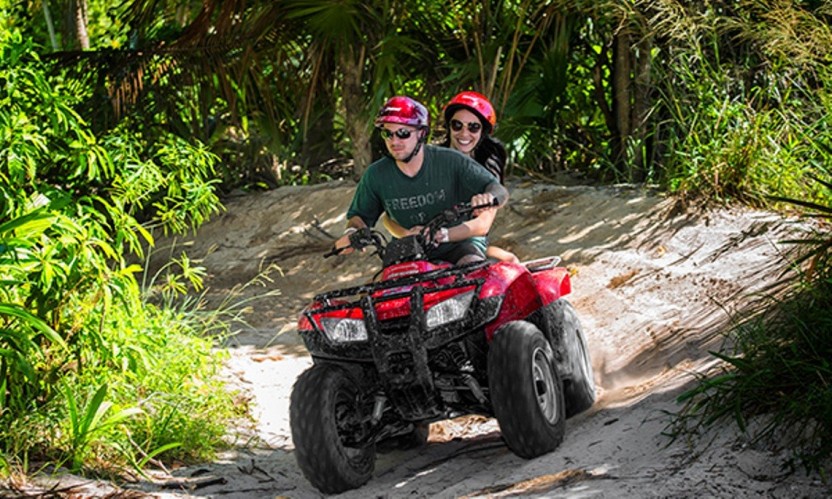
Operators with a suspended or revoked driver’s license may not operate any ATV
For those age 16 and over
Take the free online course, available at www.RideATVOregon.org
For those under age 16
Youth under age 16 must complete two-steps in order to obtain an ATV Safety Education Card.
Step one is to take an approved online course. Once the online course is complete, the youth will receive an “Instructional Permit” that is good for 180-days so the youth can get riding experience and familiarity with the vehicle under the supervision of a parent or guardian. The youth can then proceed to step two which is to take a hands-on training or evaluation course. Note that the youth must have their 11-digit ATV Safety Education Card number to take a hands-on course.
 RideATVOregon.org
RideATVOregon.orgOnce the youth has completed an approved online course, the youth will be given an “Instructional Permit” containing an 11-digit ATV Safety Education Card number. After the youth has gained some riding experience and is familiar with the vehicle, it’s now time to find a hands-on course.
Note: Hands-on Evaluation courses assess the skills of an operator who feels they have experience while Hands-on Training courses assume no previous experience or skill.
Visit our Hands-on Course Locator for available courses in your area. The average travel time to a hands-on course location is typically 1 to 2 hours. We do our best provide opportunities throughout the state. Note that course availability diminishes greatly during the late fall and winter months.
Hands-on Evaluation Courses
 omraoffroad.com/
omraoffroad.com/Hands-on Training Courses
All non-residents operating Class I (quad) and Class III (off-road motorcycle) vehicles in Oregon are required to take the online ATV Safety Course and carry an ATV Safety Education Card. They are exempt if they possess a card issued by another state or country.
They are exempt if they possess a card issued by another state or country.
Possessing an ASI or MSF training card does not qualify as a accepted state issued Safety card.
Current list of States that Oregon accepts their cards:
Adult Supervision is required for youth operators under age 16
By law, a supervisor is defined as a person who is at least 18 years of age, holds a valid ATV Safety Education Card, and is able to provide immediate direction and assistance to the youth.
Some of the worst accidents have been due to a lack of adult supervision. Adults are important to teach youth proper skills, make sure youth do not get out of control and provide assistance in case of an accident or vehicle breakdown.
Class I (quad, 3-wheelers) – There is no minimum age, but youth must meet rider fit requirements.
Youths operating Class I (quad) ATVs that are too big for them are at serious risk of injury or death. Youth must meet all the following minimum physical size requirements (Rider Fit) in relationship to the vehicle:
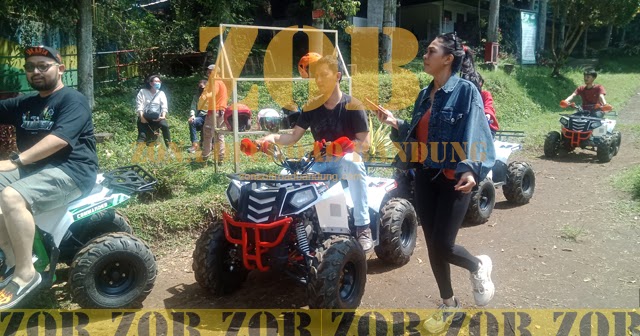
Class II (sand rail, trucks, SUVs) – Must be at least 15 years old with “driving privileges” (license or learners permit)
Class III (off-road motorcycle) – Must be at least 7 years old.
Class IV (side by side) – Operators under age of 16 must meet manufactures age recommendation. Therefore, youth can only operate youth machines.
ATV is suitable for riding in mud, off-road and difficult trails. The rider will ride through loose soil, deep puddles, clay, wetlands, etc. But in order to ensure your own comfort and not “kill” the ATV, you should understaff it and follow the recommendations.
These are aluminum plates that are attached to the standard holes in the bodywork. They protect the lower components of the ATV from mechanical damage: the engine crankcase, transmission and suspension elements.
These tires are more resistant to punctures and damage, improve traction, handling and flotation of the ATV.
Helps to pull stuck vehicles out of the mud.
The first thing that takes a hit off-road is the radiator. If we move it to the front luggage area, dirt, mud and small stones will not get inside. The engine will also cool more efficiently.
If we move it to the front luggage area, dirt, mud and small stones will not get inside. The engine will also cool more efficiently.
Protect against dirt, dust and stones flying from under the wheels. Made from durable frost-resistant plastic. Attached to the clips, fit snugly to the arches of the ATV.
Sealed to protect your luggage from moisture, dirt and dust. Are established on a forward or back platform. Some models have reflectors, which will additionally indicate the ATV in the dark.
Additional dirt protection. Equipped with a special lock that does not allow the door to open when shaking. Sheathed with 3 mm aluminum sheet.
Doors are installed in standard ATV mountings and do not require modifications.
Mud skidding results in increased fuel consumption, so it makes sense to stock up on extra fuel.
Canisters are designed to store and transport fuel, oil and water in all conditions. They are attached to the ATV from either one of the cargo platforms, or on the wardrobe trunk.
Make sure the ATV is in good working order. Checklist:
Before riding in the mud, the driver needs to master the rear, middle and front stance in order to transfer weight on the right axle in time.-1.jpg) Also extreme recommend:
Also extreme recommend:
If the ATV is stuck, do not increase the speed and make sudden movements, otherwise the ATV will only “dig in” deeper. Instead, swing the equipment back and forth or use a winch.
ATV riding techniques could be the subject of a full book. In the same article, we want to reveal to you the basics of safe riding. At first glance, there is nothing complicated in driving ATVs - you just need to steer and enjoy riding.
When driving over bumps, for example, those of the "wave" type, the driver must constantly change his position. So, when approaching an obstacle, you must shift your body back, otherwise you can hit the obstacle with your wheels.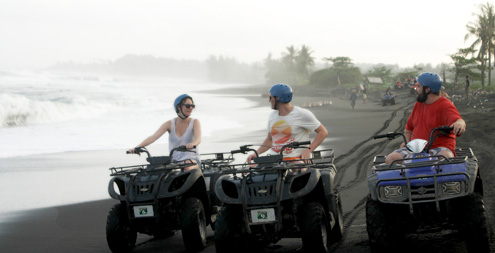 When driving over a bump, you need to move the body back forward, thus preventing excessive separation of the front wheels, i.e. rearing up the ATV. Then, when the rear wheels come off the ground, you need to move back again, otherwise you can fall out of the saddle, hitting your knees on the steering wheel.
When driving over a bump, you need to move the body back forward, thus preventing excessive separation of the front wheels, i.e. rearing up the ATV. Then, when the rear wheels come off the ground, you need to move back again, otherwise you can fall out of the saddle, hitting your knees on the steering wheel.

Moving in a straight line at low speeds (up to 40 km/h), you can afford to relax. But at higher speeds or when passing sharp turns and slopes, the driver must move very actively. Indeed, due to the high center of gravity, short wheelbase and small width, ATVs are very prone to rollovers. In addition, if the motorcycle flies separately from the motorcyclist during falls, then the ATV most often covers the driver. Therefore, in order for ATV riding not to end with serious injuries, it is necessary to study the driving rules and strictly follow them.
ATV rider's weight is an important factor that affects machine handling. By shifting their weight, the driver can unload or load the front or rear of the ATV, thus compensating for centrifugal forces.
The first rule you need to learn is that when riding an ATV, you need to relax your arms. When driving, the driver can always let go of his hands, because his legs are holding him in the saddle. As the speed increases, the load on the legs also increases.
As the speed increases, the load on the legs also increases.
Conventionally, three racks are distinguished. The middle stance is used when driving in a straight line without turning. When opening the gas, the body must be moved forward to unload the hands. Thus, the front strut is obtained. When braking and closing the gas, the body, on the contrary, must be moved back, i.e. take a back seat. By the way, the word "stand" comes from the word "stand", and this name is not accidental. When actively riding an ATV, you do not have to sit. Standing on an ATV lowers your center of gravity. After all, there is a huge difference between the weight on a high saddle and the weight on the footrests. And the effect of moving the body in a standing position is much greater than from fidgeting back and forth on the saddle.
When passing a corner on a motorcycle, it is tilted inward, thus fighting against centrifugal force. But you can't do that with a quad bike. Therefore, it is necessary to use the weight of the driver. The main rule here is to always transfer the weight inside the turn. Moreover, it is necessary not only to tilt your shoulders. It is necessary to hang the entire body, including the fifth point. Only the shin and knee hold on to the saddle. Of course, if you turn at minimum speed, then you can limit yourself to turning the steering wheel.
Therefore, it is necessary to use the weight of the driver. The main rule here is to always transfer the weight inside the turn. Moreover, it is necessary not only to tilt your shoulders. It is necessary to hang the entire body, including the fifth point. Only the shin and knee hold on to the saddle. Of course, if you turn at minimum speed, then you can limit yourself to turning the steering wheel.
The correct stance is characterized by slightly bent knees, elbows set apart, and a slightly arched and relaxed back. Why not stand on straight legs or keep your back straight and tense? Because bent knees allow you to absorb shock coming from uneven terrain. By the way, the force of these blows is sometimes quite enough to knock the driver out of the saddle. A straight tense back under such conditions can lead to injury to the intervertebral discs and even a compression fracture of the spine. Yes, and the internal organs with the wrong fit will have a hard time.
Active ATV riding requires good physical shape. So, in quad schools, the duration of the lesson does not exceed an hour, and at the end of the lesson, students can literally be squeezed out. And riding an ATV off-road is also an activity worthy of training in the gym.
When riding non-sport ATVs, it is best to avoid jumping. Firstly, this way you can break the ATV. Secondly, in order to safely perform such tricks, the ATV motor must have high-torque and fast response to the throttle. If, nevertheless, the jump could not be avoided, then it is necessary to land in the middle stance, but be ready to move to the back. When the wheels touch the ground, you need to slightly open the gas. It is better not to use four-wheel drive when jumping.
Every time you ride an ATV, you need to practice looking into the distance. This is necessary to develop the habit of evaluating the trajectory of movement in advance. Beginners often do not have time to track the road, and at some point they are not ready to perform adequate actions.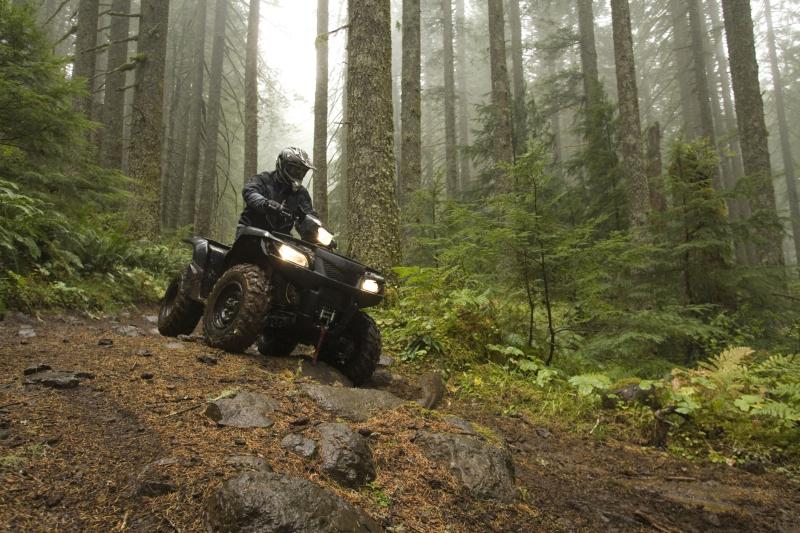 And another, very predictable obstacle, can become a problem for them.
And another, very predictable obstacle, can become a problem for them.
| When moving along a slope, it is necessary to move the body to the opposite side of the slope. On the steepest sections, full overhang should be used, such as when cornering at speed.
|
Before you start climbing, you need to pick up speed. Then the resulting inertia will allow you to smoothly drive into the steepness. If you suddenly open the gas directly on the rise, the ATV may tip over.